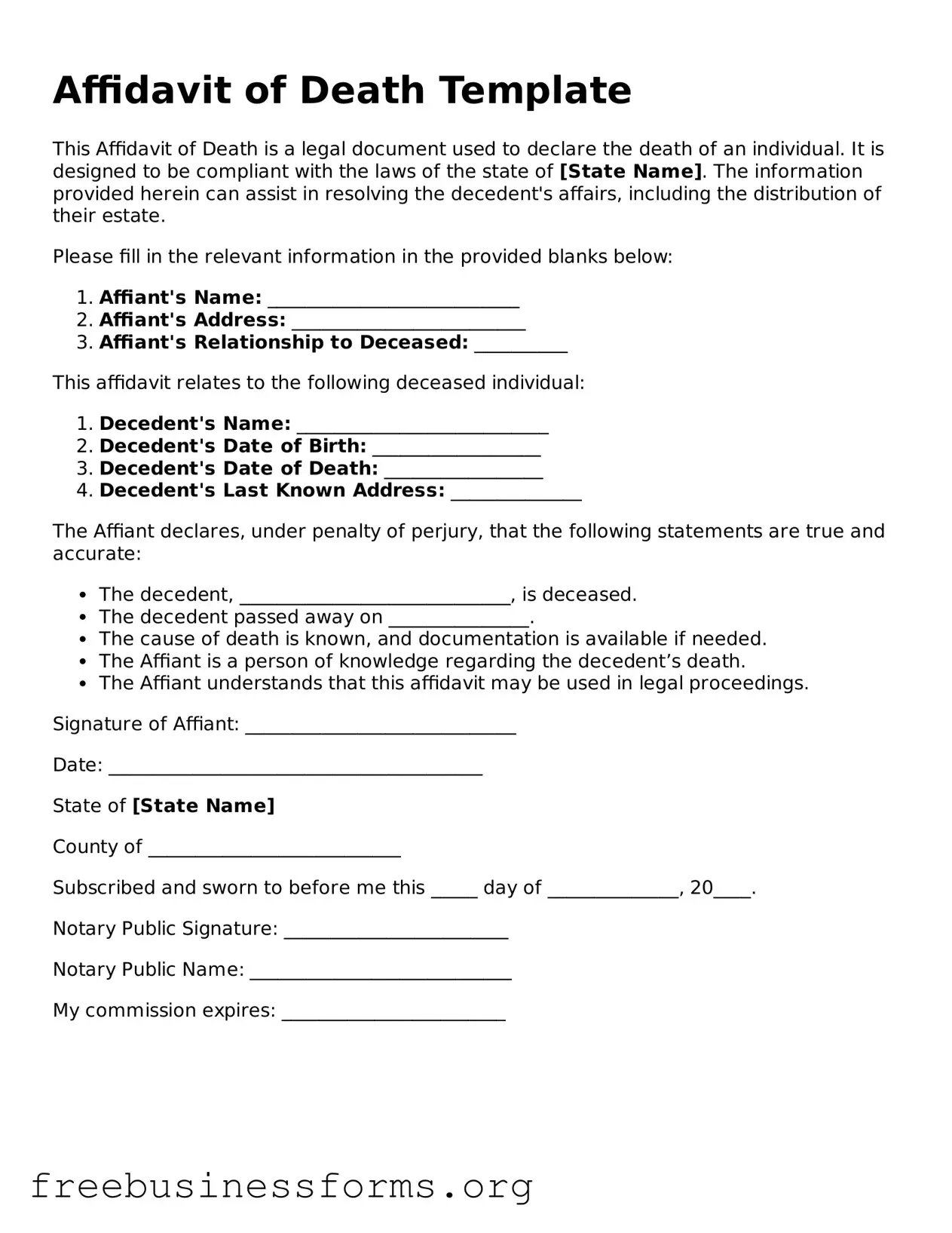Affidavit of Death Template
This Affidavit of Death is a legal document used to declare the death of an individual. It is designed to be compliant with the laws of the state of [State Name]. The information provided herein can assist in resolving the decedent's affairs, including the distribution of their estate.
Please fill in the relevant information in the provided blanks below:
- Affiant's Name: ___________________________
- Affiant's Address: _________________________
- Affiant's Relationship to Deceased: __________
This affidavit relates to the following deceased individual:
- Decedent's Name: ___________________________
- Decedent's Date of Birth: __________________
- Decedent's Date of Death: _________________
- Decedent's Last Known Address: ______________
The Affiant declares, under penalty of perjury, that the following statements are true and accurate:
- The decedent, _____________________________, is deceased.
- The decedent passed away on _______________.
- The cause of death is known, and documentation is available if needed.
- The Affiant is a person of knowledge regarding the decedent’s death.
- The Affiant understands that this affidavit may be used in legal proceedings.
Signature of Affiant: _____________________________
Date: ________________________________________
State of [State Name]
County of ___________________________
Subscribed and sworn to before me this _____ day of ______________, 20____.
Notary Public Signature: ________________________
Notary Public Name: ____________________________
My commission expires: ________________________
